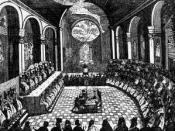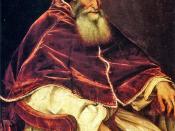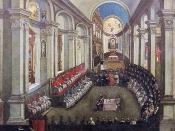Timothy Tocmacov
Mr. Grundfest - AP Euro - FRQ #23
The Catholic Counter Reform
In the 1500s a tremendous wave of religious reforms would lead to Protestantism. As Protestants grew in numbers in places such as England and Germany, The Catholic Church became anxious of being annihilated. In eagerness, the church set up counter reforms to suppress the spreading of so called pagan values. The Catholic Church defended their faith from Protestantism in three main ways; by dismissing the council of Trent to leave the pope with full power and the church in unity, the forming of new orders to act as crusaders and convert pagans, and the use of the inquisition to rid heretics.
The riddance of the council of Trent left the church unified and enabled the suppression of Protestantism. The council of Trent proved to be a driving force against papal authority. The bishops, who made up the council, became a very small group, causing an excess of power to be administered to a select few, and hence a power thirst to ensue.
The bishops challenged the pope by stating that the council was more powerful than the word of the pope. After a debate forced the council to admit defeat, it was abolished until the 1960's. The assurance of papal superiority ensured the unity of the Catholic Church. If this unity had not remained the church may never of had the strength to challenge Protestantism and keep the Catholic traditions supported.
Along with the nullification of the council of Trent, many religious orders were founded in order to suppress Protestantism. The Popes power to unify all Catholics could now be used to successfully overpower the small Germanic governments and the remaining scattered Protestants. The founding of the new religious orders was used to further...


